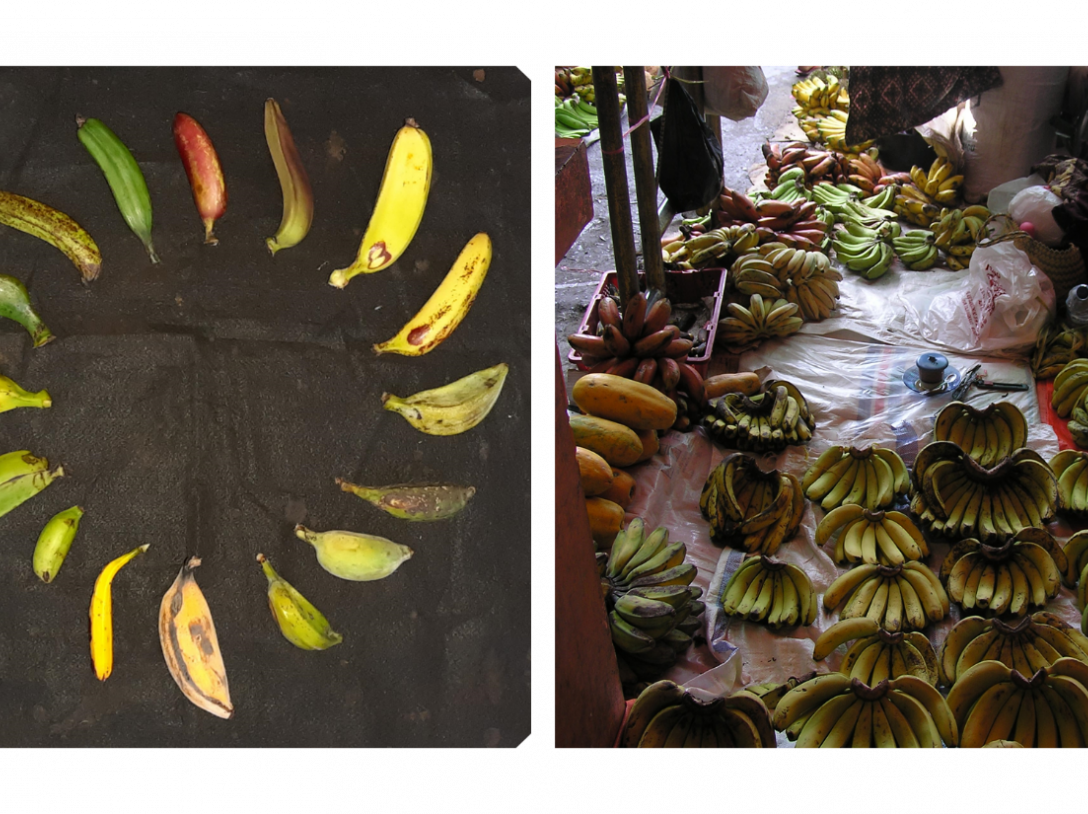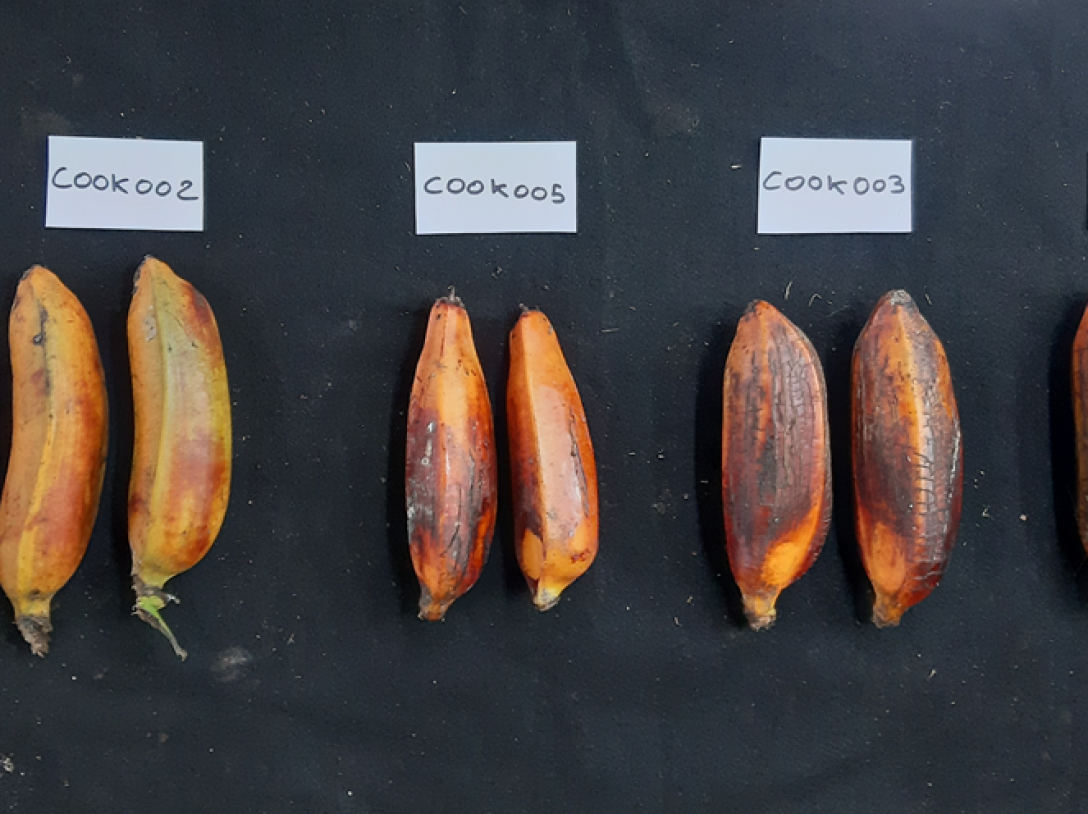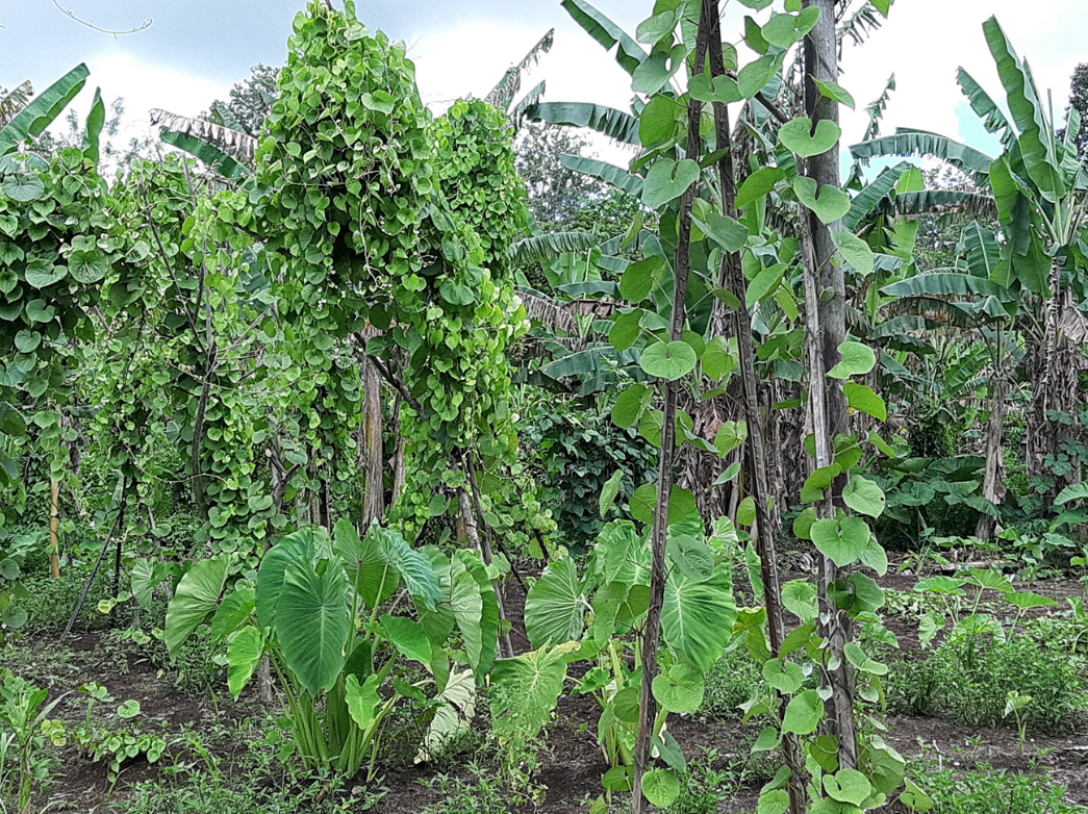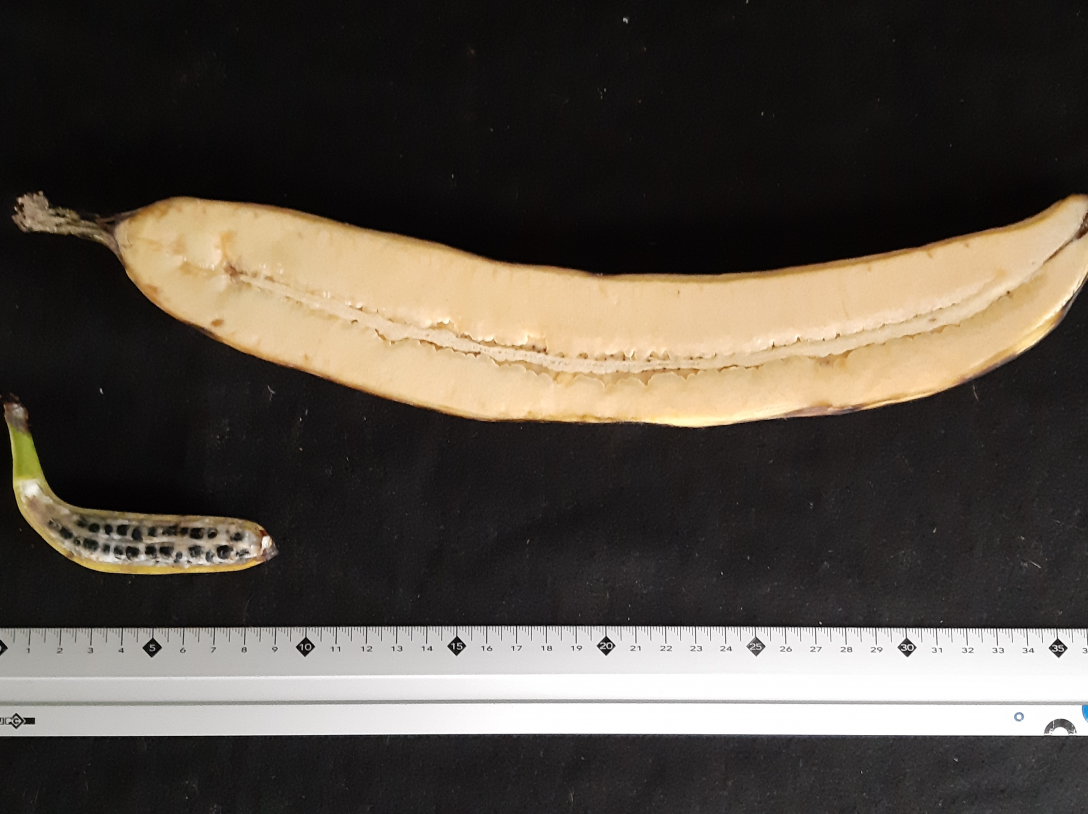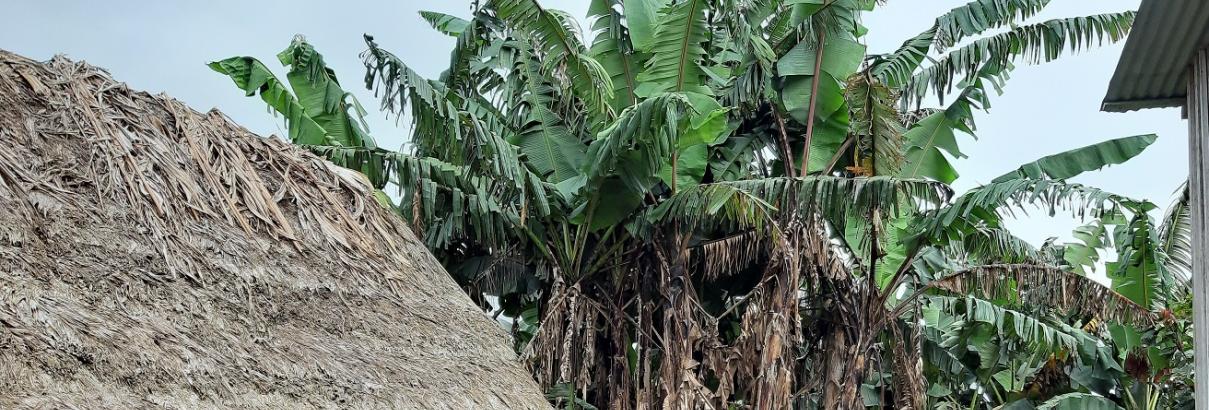Plant history
Banana is a giant herb that originates in a wide South-East Asian / West Oceanian region. Wild bananas can be found from India at the west to the Solomon Islands at the east. They can easily be recognized by their fruits full of seeds. The approximate 70 species of wild bananas are divided into two botanical sections, Musa (formally comprising Rhodochlamys and Eumusa) and Callimusa (formally comprising Australimusa and Callimusa). Domestication occurred in both sections but most of the cultivated bananas belong to the Musa section, even though they are hybrids between different taxa. First banana domesticates originated from hybridization of different subspecies of M. acuminata (A genome) with a later contribution of M. balbisiana (B genome). A third species, M. schizocarpa (S genome), is also involved at a minor extent. Cultivated bananas, unlike their wild ancestors that are all diploids, can be either diploids (AA, AB and AS genomes), triploids (AAA, AAB, AAS and ABB genomes) or more rarely tetraploids (AABB and other undefined genomic compositions).
In section Callimusa, edible bananas are named ‘Fe’i’ after their Hawaiian name and are distinct in shape and taste from the Musa section bananas. Most of ‘Fe’i’ cultivars bare an erected bunch. They also carry orange flesh fruits that are rich in pro-vitamin A. They are rare, with a distribution restricted to a wide Pacific region including eastern Indonesian islands. The Fe’i bananas were poorly studied and their exact ancestors are still unknown. The term ‘T genome’ is therefore used to designated edible bananas from the former Australimusa section. A few edible hybrids between the two botanical sections also exist (for example AT, AAT and ABBT genomes with T used for the undefined Callimusa contributor).
The main domestication syndrome in bananas is the advent of seedless fleshy fruits through the fixation of two traits that are parthenocarpy, or the ability to set fruits without the need of prior pollination, and sterility. Therefore, domestication is also tightly linked to an exclusive vegetative mode of propagation for that crop. This is made possible thanks to the suckers naturally emerging from the mother plants. This vegetative mode of cultivation also restricts the diversification of bananas to the accumulation of mutations and to rare residual sexual events. Consequently, each landrace carefully selected after thousands of years of cultivation is a unique and precious combination of alleles.
Importance
Banana (Musa spp., Musaceae) is a fruit of high economic importance, but it is also a subsistence crop that is stapple for millions of people. Grown in more than 130 countries, this fruit can be consumed ripe and raw as dessert or cooked unripe as a starchy food. The most famous banana cultivars are the commercial ‘Cavendish’ bananas (AAA) that are extensively cultivated in monoclonal plantation deemed to export and the ‘Plantain’ (AAB) that are the cooking African stapple banana. However, a wide diversity of cultivars differing in the shape, colour and size and exhibiting a range of agronomic and organoleptic properties are cultivated too, mostly by smallholders farmers.
In many countries, bananas are at the basis of a range of traditional recipes, such as Matooke in Uganda. In this dish exclusively prepared by women, dedicated varieties of East African Highland bananas, also called Mutika / Lujugira (AAA), are steamed in banana leaves before being mashed1 . Another example is the Polynesian Popoi, traditionally prepared by men. It consists in a combination of Musa section banana and ‘Fe’i’ that are cooked together in the traditional ground oven before being mashed. The Popoi obtained is then wrapped in banana leaves before being shared between the community members2 . Other parts than the banana can be consumed. It is the case of male buds that are commonly used as vegetables in Asia. Inner cores of the pseudostems of various wild bananas are also sold on markets to be consumed as salad. More surprisingly, young fruits of seeded bananas can also be eaten. it is the case notably of the young fruits of specific clones affiliated to the wild species M. balbisiana, planted on purpose, and that enter the composition of the Javanese salad in Indonesia. Similar practices were also observed in some regions of India with a type of M. balbisiana named Bhimkol that is cultivated and bare incompletely developed soft seeds. In this country, ripe fruits of fully fertile ornamental species, such as M. velutina and M. ornata are also consumed as snacks by children who spit out seeds3 .
Beside their use as foods, bananas in some regions of the world are also associated to legends and oral stories which witnesses of their high cultural importance. For example, the myth of the beginning of the world for the Galela people, on Halmahera Island (Indonesia), refers to wild and cultivated bananas as the first plants that grew on the newly created island4 . Equally, the cooking landrace named ‘Navente’ is tightly linked to the founding story of the Eagle tribe in the island of Bougainville (Papua New Guinea)5 while Maoli bananas represent the reincarnation of the spirit and boby of the Ancestors in the Kanak society of New-Caledonia6 .
Status of genetic resources
Despite their clonal nature, cultivated bananas are very diverse in farmers’ fields, especially in their centre of origins. For example, a recent survey identified 45 different banana landraces cultivated in a single community of Papua New Guinea. Two types of landraces exist in bananas. The first ones are the products of different sexual reproduction events while the second ones are derived from each other via the accumulation of mutations and/or epigenetics. These last ones generally exhibit common features but differ in characters such as shape, color or size, as well in organoleptic properties. Safeguarding these landraces is tightly linked to the traditional farming practices of the communities who grow them. Additionally, a global effort to preserve this diversity ex-situ is made, with 68 banana Genebanks existing worldwide (Banana collections | Musanet.org). Because wild bananas are more difficult to conserve ex-situ, they are largely under-represented in Genebanks. However, several initiatives have been launched in the past years that target the development of conservation methods for wild banana seeds.
- 1Anna, M. (1940). Notes on the Preparation of Food in Buganda. Primitive Man, 13(1), 26-28. doi:10.2307/3316351
- 2Teuira HENRY, Tahiti aux temps anciens, Soc. des Océanistes N°1. Musée de l’homme, Paris 2004
- 3Uma, S. 2006. Farmers' knowledge of wild Musa in India. FAO, Roma (ITA). 46p. http://www.fao.org/docrep/011/i0548e/i0548e00.htm
- 4Yoshida S. 1980. Cultivated bananas among the Galela. Senri Ethnological Studies. 7: 119-139.
- 5Sardos, J., Paofa, J., Janssens, S.B., Sachter-Smith, G., Rauka, G. and Roux, N. 2017. Banana Collecting Mission in the Autonomous Region of Bougainville (AROB), Papua New Guinea. 26p. http://hdl.handle.net/10568/83229
- 6Kagy, V. and Carreel, F. 2004. Bananas in New Caledonian Kanak society: their socio- cultural value in relation with their origins. Ethnobotany Research and Applications 2(1):29-35. http://journals.sfu.ca/era/index.php/era/article/view/35
